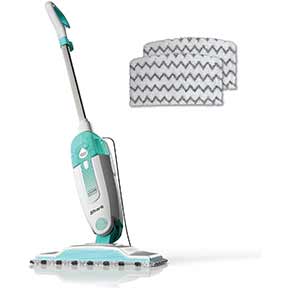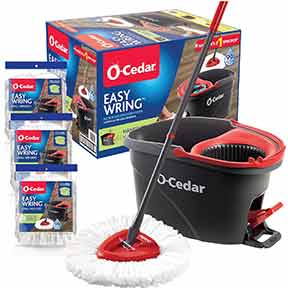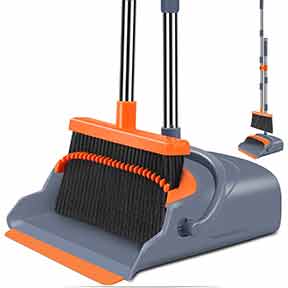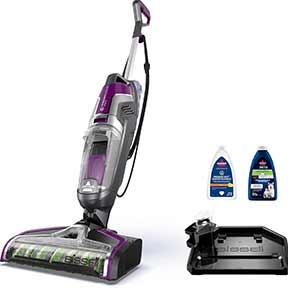How to Vacuum Carpets

Basic Fundamentals of Carpet Cleaning.
How to Vacuum Carpets Like a Pro: A Complete Guide
Knowing how to vacuum carpets the right way makes a noticeable difference in the cleanliness and longevity of your home. It’s not just about dragging out the vacuum and pushing it around. Whether you’re tackling wall-to-wall carpet, area rugs, or carpeted stairs, using proper vacuuming techniques can help remove allergens, dirt, and embedded debris – leaving your home fresher, healthier, and looking its best.Prepping the Space Before You Vacuum
Before you begin vacuuming, take a few key steps:- Declutter the room by picking up toys, cords, paper, and other small items.
- Dust and clean top surfaces first (like furniture and baseboards) so any falling dust can be vacuumed afterward.
- Vacuum furniture and drapes first using the proper attachments.
How to Vacuum Carpets Efficiently
Follow these best practices when learning how to vacuum carpets the right way:- Start in the farthest corner of the room and vacuum your way out toward the door.
- Use slow, overlapping strokes to let the vacuum do its job – fast passes often leave dirt behind.
- Vacuum high-traffic areas more than once, especially near entryways and hallways.
- Alternate directions (e.g., vertical then horizontal) for a deeper clean.
- Check your vacuum bag or bin – a full container reduces suction power.
Tackle Carpet Edges and Corners
Vacuum cleaners often don’t reach edges and corners well. Use:- A stiff broom to sweep away dust and debris from baseboards before vacuuming.
- A crevice tool to get into tight spots and along the wall.
Tips for Special Carpeted Areas
Bathrooms
If your bathroom has wall-to-wall carpeting or rugs:- Start behind the toilet, vacuum around cabinets, bathtubs, and behind the door.
- Be mindful of moisture on the floor – vacuuming wet areas can damage your vacuum.
Stairs and Hallways
- Use a canister vacuum with a wand for stairs.
- Start at the top of the stairs, working your way down.
- In hallways, vacuum from the end furthest from the stairs and back out.
Maintaining Your Vacuum for Best Results
Learning how to vacuum carpets also means taking care of your machine:- Change vacuum bags or empty the dust container before each major cleaning.
- Clean or replace filters as needed to maintain airflow and suction.
- Inspect belts and brushes regularly for wear or hair tangles.
- Use the right height setting for your carpet (high pile vs. low pile).
Attachments Make a Difference When you Vacuum Carpets
Vacuum attachments can dramatically improve your results:- Dusting Brush: Great for drapes, furniture, and leather.
- Crevice Tool: Ideal for corners, baseboards, drawer interiors, and sliding door tracks.
- Extension Wand: Helps reach ceilings, light fixtures, and behind furniture.
- Floor Brush: Designed for hard flooring, but also useful in carpeted tight spaces.
How to Vacuum Carpets Such as Area Rugs and Scatter Rugs
- Shake out small rugs outside before vacuuming.
- Fold and set aside rugs while you vacuum the floor underneath.
- Use a fabric softener sheet and toss rugs in the dryer (low heat) with clean tennis shoes to fluff the nap.
Move Furniture to Prevent Wear
Moving furniture not only refreshes your décor but helps avoid traffic patterns that wear out the carpet:- Use lightweight area rugs and runners in high-traffic areas.
- Rearranging furniture regularly can prevent permanent indentations.
Keep Dirt Outside Where It Belongs
Prevention is key when thinking about how to vacuum carpets less often:- Place outdoor rugs or mats at all entryways to trap dirt.
- Encourage a no-shoes policy indoors to reduce soil buildup.
- If you have a mudroom, make it a habit to remove shoes and clean paws before entering.
Deep Cleaning Beyond Vacuuming
Vacuuming removes surface dirt, but professional carpet cleaning or using a home steam cleaner:- Lifts ground-in dirt and oils that vacuuming can’t reach.
- Helps restore color and fluff to high-traffic areas.
- Reduces allergens like dust mites and pet dander.
Final Thoughts on How to Vacuum Carpets
Even with weekly vacuuming, plan to deep clean carpets every 6 to 12 months – or more often if you have pets or allergies. Knowing how to vacuum carpets properly goes far beyond turning on a machine and hoping for the best. With the right prep work, techniques, and maintenance, your carpets will stay cleaner, look better, and last longer. Whether you’re vacuuming a single room or your entire home, these tips will help make the job easier and more effective. Let your vacuum work for you – not the other way around!Floor Supplies














